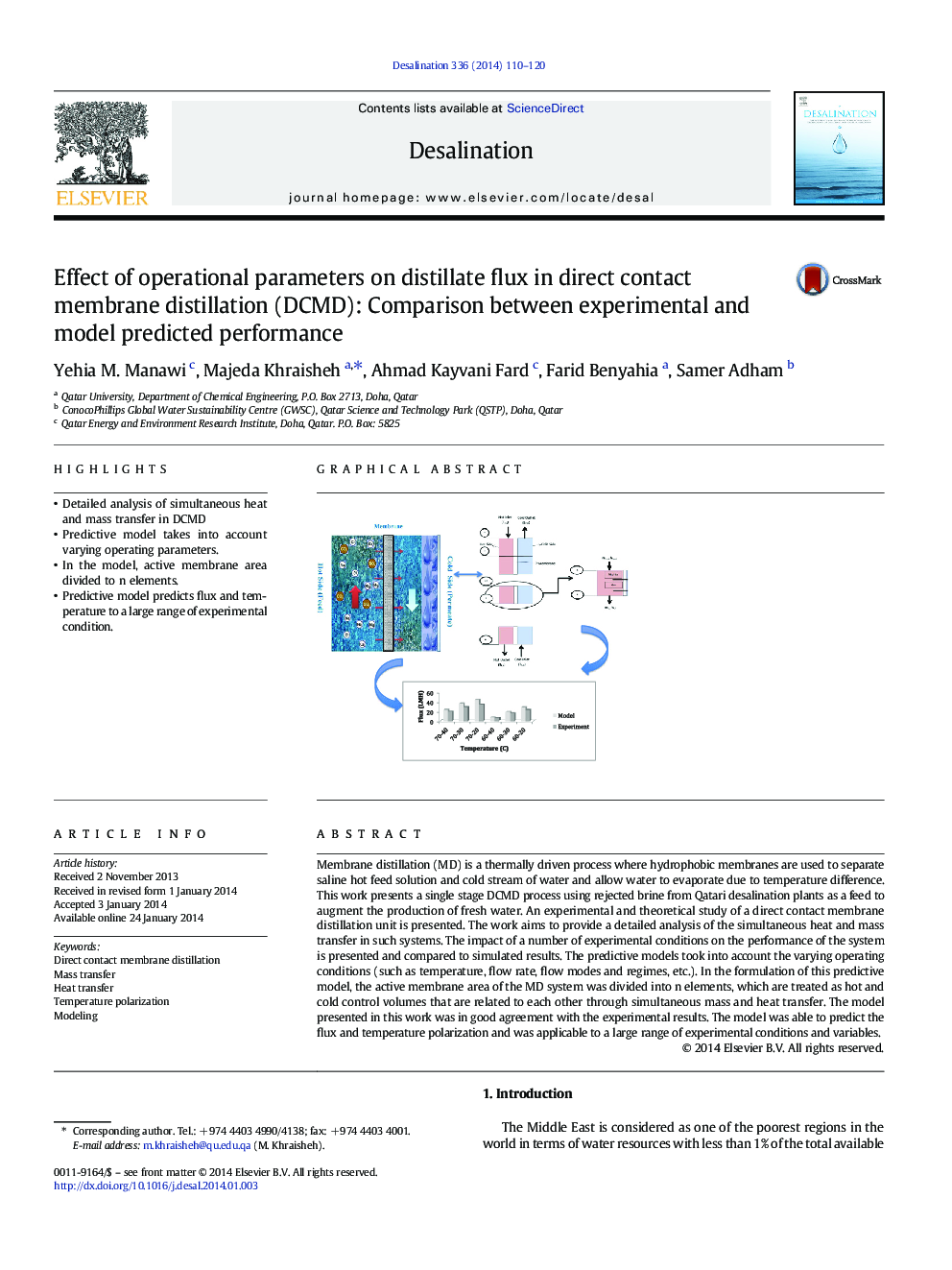| Article ID | Journal | Published Year | Pages | File Type |
|---|---|---|---|---|
| 623653 | Desalination | 2014 | 11 Pages |
•Detailed analysis of simultaneous heat and mass transfer in DCMD•Predictive model takes into account varying operating parameters.•In the model, active membrane area divided to n elements.•Predictive model predicts flux and temperature to a large range of experimental condition.
Membrane distillation (MD) is a thermally driven process where hydrophobic membranes are used to separate saline hot feed solution and cold stream of water and allow water to evaporate due to temperature difference. This work presents a single stage DCMD process using rejected brine from Qatari desalination plants as a feed to augment the production of fresh water. An experimental and theoretical study of a direct contact membrane distillation unit is presented. The work aims to provide a detailed analysis of the simultaneous heat and mass transfer in such systems. The impact of a number of experimental conditions on the performance of the system is presented and compared to simulated results. The predictive models took into account the varying operating conditions (such as temperature, flow rate, flow modes and regimes, etc.). In the formulation of this predictive model, the active membrane area of the MD system was divided into n elements, which are treated as hot and cold control volumes that are related to each other through simultaneous mass and heat transfer. The model presented in this work was in good agreement with the experimental results. The model was able to predict the flux and temperature polarization and was applicable to a large range of experimental conditions and variables.
Graphical abstractFigure optionsDownload full-size imageDownload as PowerPoint slide
